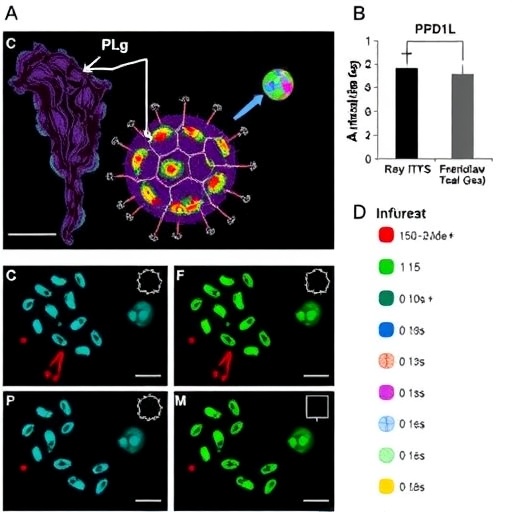In a groundbreaking study published in BMC Nursing, researchers Moon and Kang explore the factors influencing turnover intention among newly graduated nurses in South Korea, employing a data-driven approach utilizing decision tree analysis. The findings highlight a concerning trend of high turnover among this demographic, shedding light on potential interventions needed within the healthcare system. As the nursing workforce faces aging and mounting stressors, understanding what drives nurses to leave their positions is paramount.
The issue of nurse turnover is a complex one, deeply rooted in the socio-economic fabrics of healthcare environments. In recent years, South Korea has witnessed a significant increase in the number of nursing graduates, yet many are opting to leave their positions shortly after commencement. This exodus poses serious implications for patient care quality, the advancement of healthcare practices, and the overall stability of nursing teams.
Using decision tree analysis, Moon and Kang categorized various predictors of turnover intentions among nurses, such as job satisfaction, work environment, support systems, and personal well-being. The decision tree model serves as a powerful tool, allowing for the visualization of how these variables interact and ultimately inform a nurse’s intention to remain in or leave their job. By delineating these relationships, the research aims to equip healthcare administrators with actionable insights to bolster nurse retention strategies.
A particularly striking outcome of the study is the emphasis placed on the role of job satisfaction. Factors such as workplace respect, recognition, and opportunities for professional development were found to significantly correlate with a nurse’s desire to stay in their job. The implications here are clear; healthcare organizations need to focus on creating work environments that foster satisfaction and appreciation for nursing roles. By investing in programs designed to enhance job satisfaction, hospitals can mitigate the risk of turnover.
Another key finding emphasizes the significance of mentorship and peer support networks. Newly graduated nurses often experience a steep learning curve, and those who feel supported by experienced colleagues report higher levels of job satisfaction and lower turnover intentions. The formation of structured mentorship programs can thus play a vital role in not only assisting new nurses in their transition but also in encouraging them to commit to the profession long-term.
The study’s findings reflect broader trends within healthcare that are echoed in various global contexts. The retention of skilled nursing staff is an issue faced internationally, and solutions derived from Moon and Kang’s research can offer transformative strategies applicable worldwide. From improving working conditions to enhancing team dynamics, tailored interventions based on solid data can lead to significant changes within healthcare organizations, ultimately benefiting patients and healthcare providers alike.
Additionally, the research underscores the importance of addressing personal well-being among nurses. High-stress levels, fatigue, and burnout are prevalent in the nursing profession, particularly among new graduates who often bear the brunt of emotional and physical demands. The recognition of these elements as predictors of turnover intention suggests that health systems must prioritize mental health resources and stress management programs tailored specifically for nurses. Providing access to mental health support could greatly enhance their job satisfaction and commitment.
In South Korea, where traditional views of employment are evolving, younger generations prioritize work-life balance and job fulfillment over traditional metrics of success. This cultural shift is reflected in nursing as well, indicating that new policies and practices are necessary to align with the changing expectations of the workforce. Moon and Kang’s research serves as a critical opportunity for healthcare policymakers to recalibrate their approaches to staffing and retention within the nursing field.
Moreover, decision tree analysis not only assists in understanding current turnover intentions but also opens avenues for predictive modeling. By leveraging this analytical framework, healthcare institutions can preemptively identify at-risk employees and address their concerns before they culminate in resignations. The integration of advanced analytics in workforce management can result in more sustainable nursing practices and a healthier workplace environment.
Adopting a proactive stance will not only enhance nurse retention but also improve patient care quality. Research has consistently shown a direct link between nurse satisfaction and patient outcomes. When nurses feel valued and supported, they are more likely to provide high-quality care, leading to better patient satisfaction rates and health outcomes. Consequently, investments in nurse retention strategies not only protect healthcare resources but also ensure optimal patient experiences.
As the nursing landscape continues to evolve, the insights from Moon and Kang’s study lead us toward a more informed future. By understanding the multifaceted reasons behind turnover intentions, healthcare leaders can strategically implement changes that reinforce the bond between nurses and their professions. The ramifications of such changes are profound—not only for nurses themselves but for the healthcare sector as a whole.
In conclusion, the findings presented by Moon and Kang in their decision tree analysis illuminate the pressing need for systemic change within nursing environments in South Korea and beyond. By addressing key factors such as job satisfaction, mentorship availability, personal well-being, and cultural expectations, healthcare organizations can develop targeted interventions to reduce turnover intentions among newly graduated nurses. This study constitutes a vital piece of the puzzle, contributing significantly to the broader discourse on nurse retention strategies.
Overall, as we continue to unravel the complexities surrounding nurse turnover, it becomes clear that informed, data-driven approaches are essential. Moon and Kang’s research provides a framework for understanding these dynamics, empowering healthcare systems to make the informed changes necessary to support their nursing staff fully. The commitment to nurturing newly graduated nurses is not just a matter of policy—it’s a commitment to the future of healthcare itself.
Subject of Research: Nurse turnover intention among newly graduated nurses in South Korea
Article Title: Predicting turnover intention among newly graduated nurses in South Korea: a decision tree analysis
Article References:
Moon, M., Kang, H. Predicting turnover intention among newly graduated nurses in South Korea: a decision tree analysis.
BMC Nurs 24, 1411 (2025). https://doi.org/10.1186/s12912-025-04041-5
Image Credits: AI Generated
DOI: https://doi.org/10.1186/s12912-025-04041-5
Keywords: Nurse retention, job satisfaction, mentorship, turnover intention, healthcare workforce.
Tags: decision tree analysis in nursing researchfactors influencing nurse turnoverimpact of work environment on nurse retentionimplications of nurse turnover on patient careinterventions to reduce nurse turnoverjob satisfaction among new nursesnursing workforce challenges in South Koreapersonal well-being and nurse retentionsocio-economic factors in healthcare employmentsupport systems for newly graduated nursestrends in nursing graduate employment in Koreaturnover intentions of new nurses





